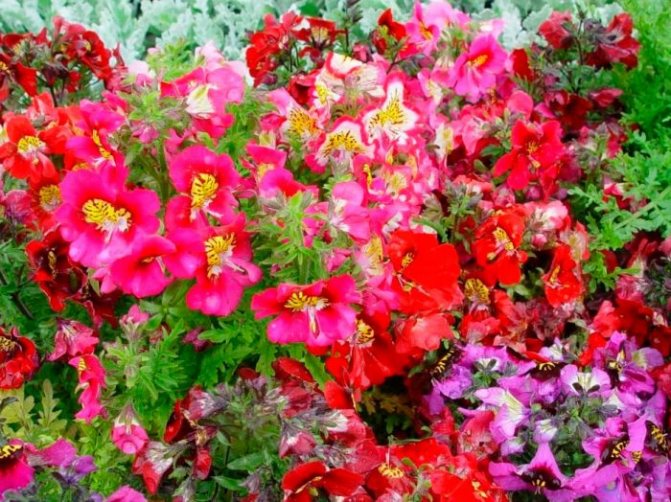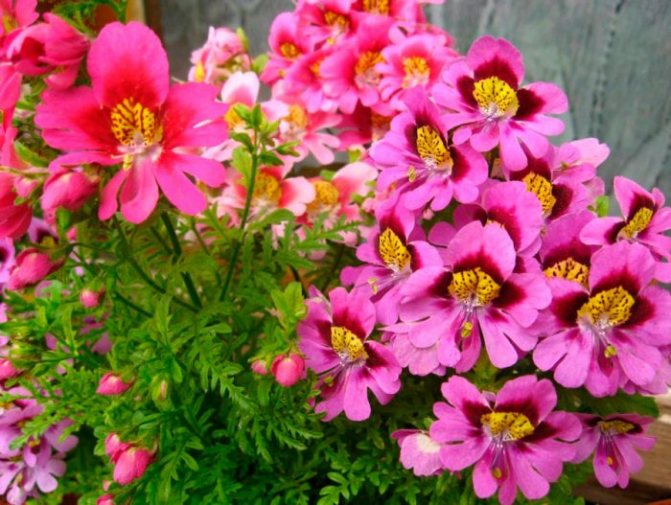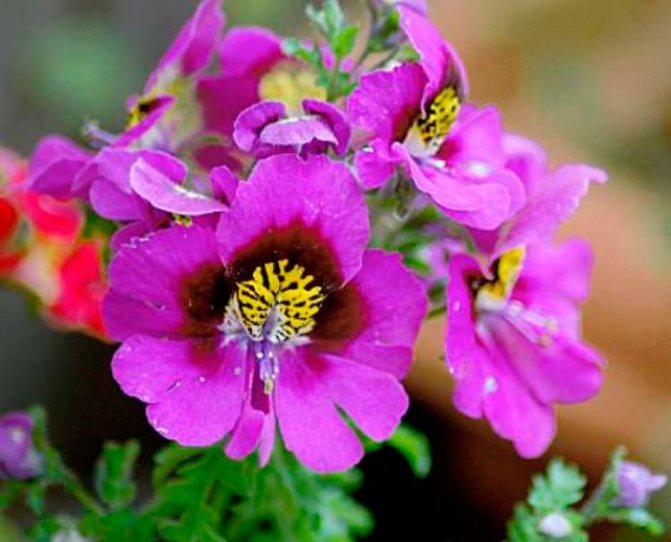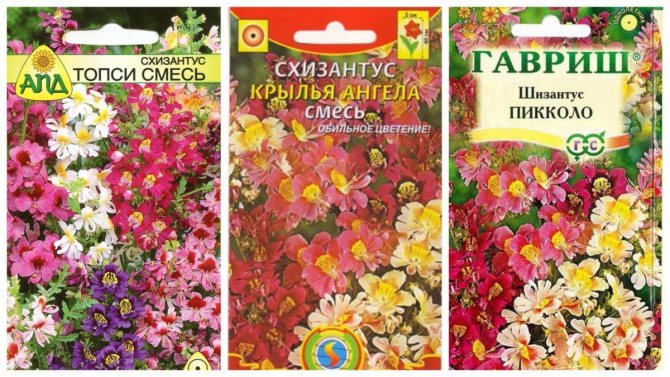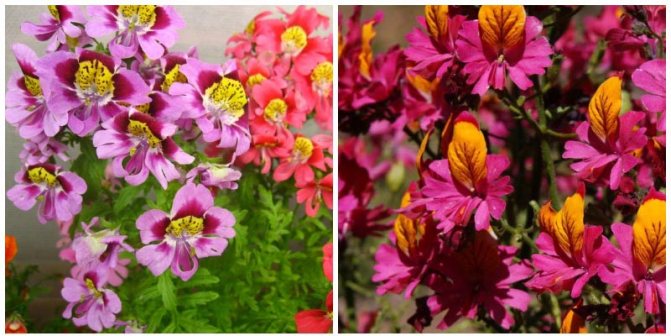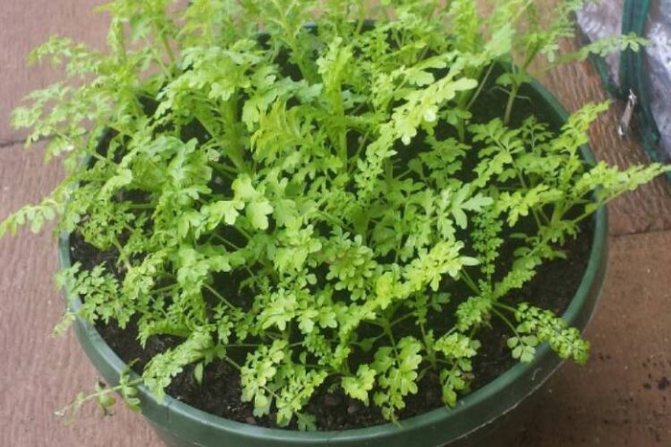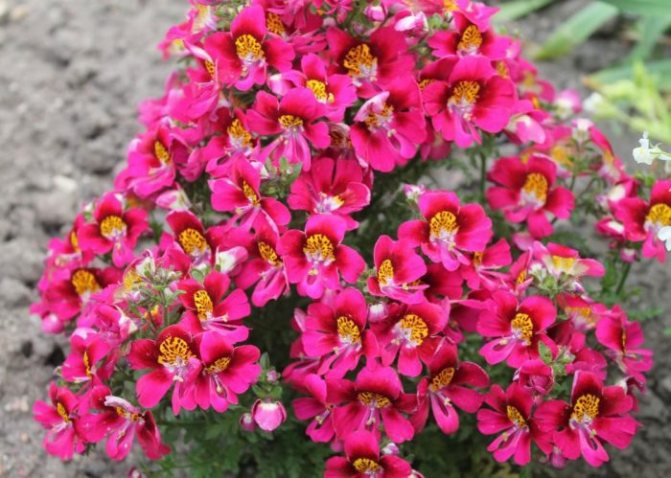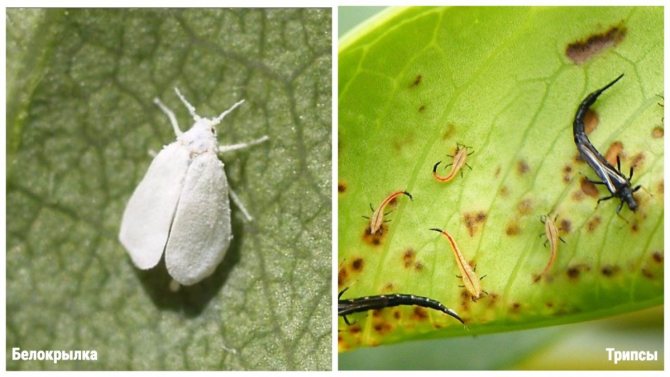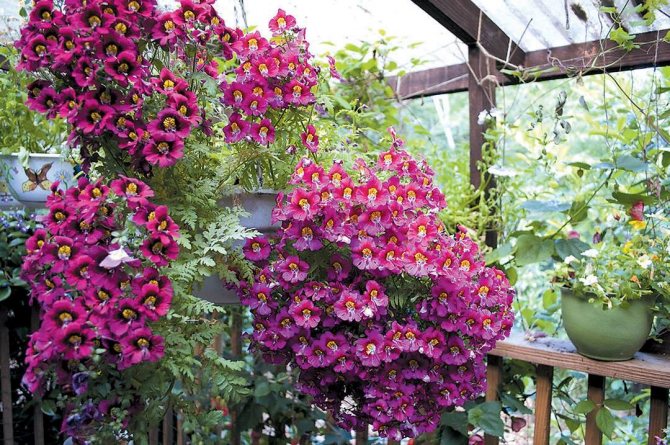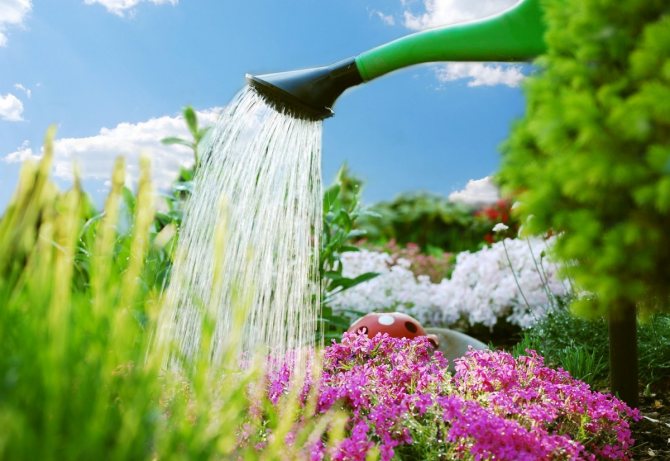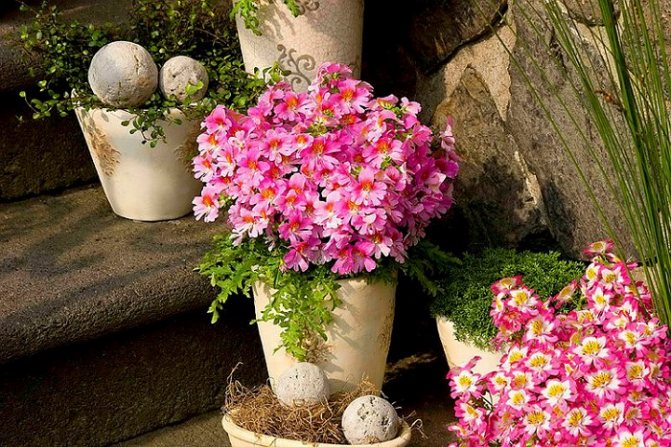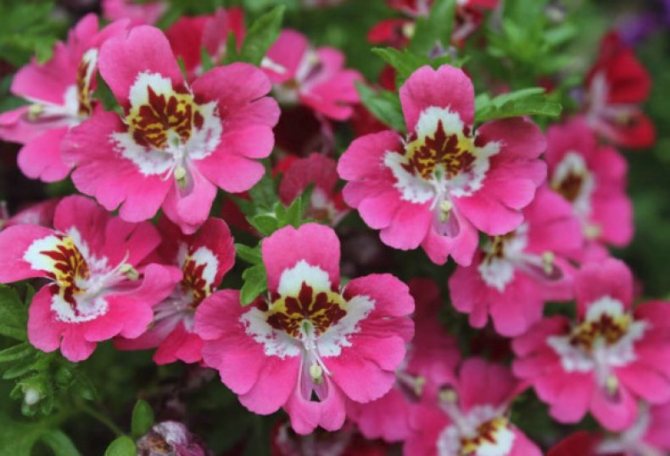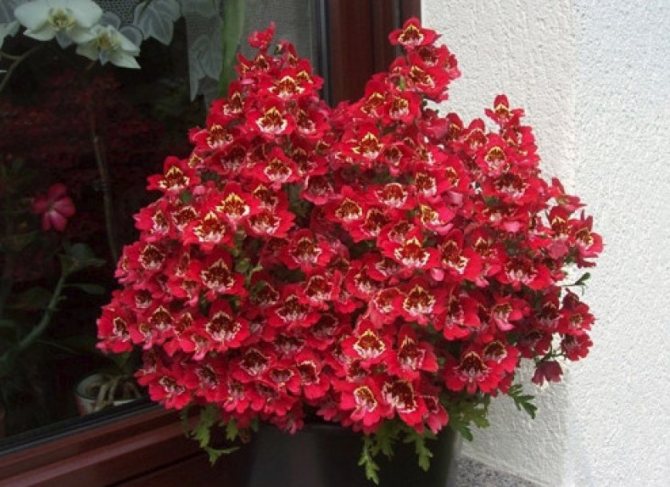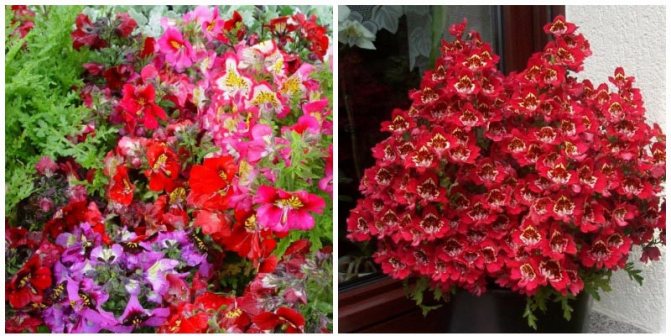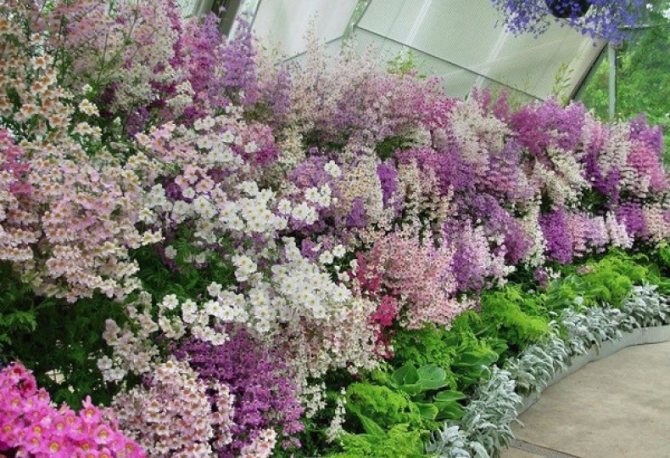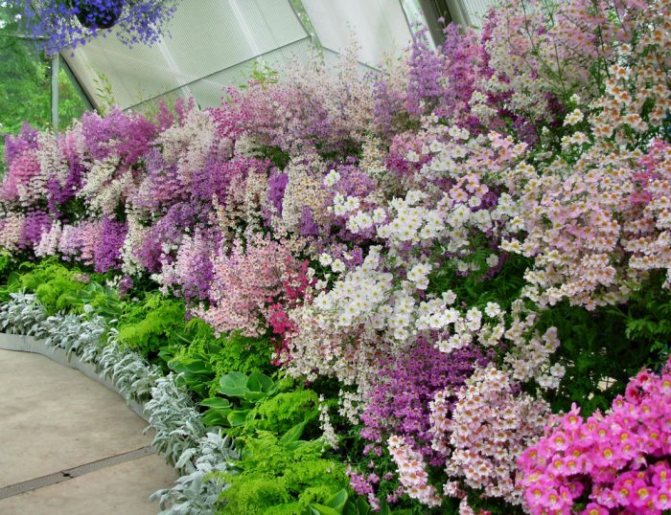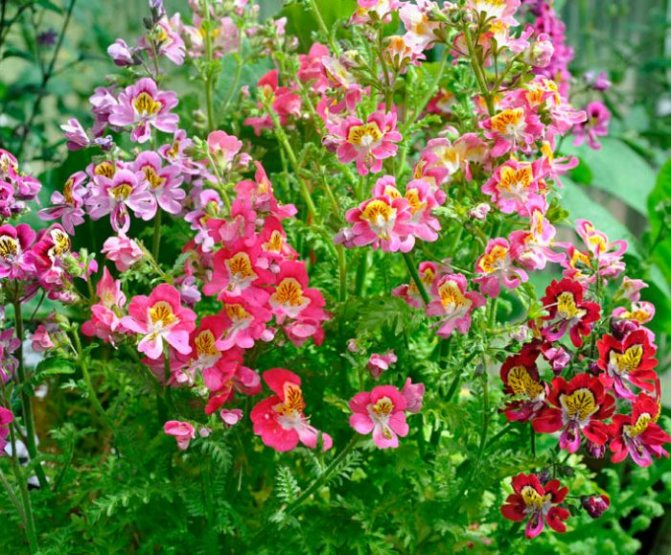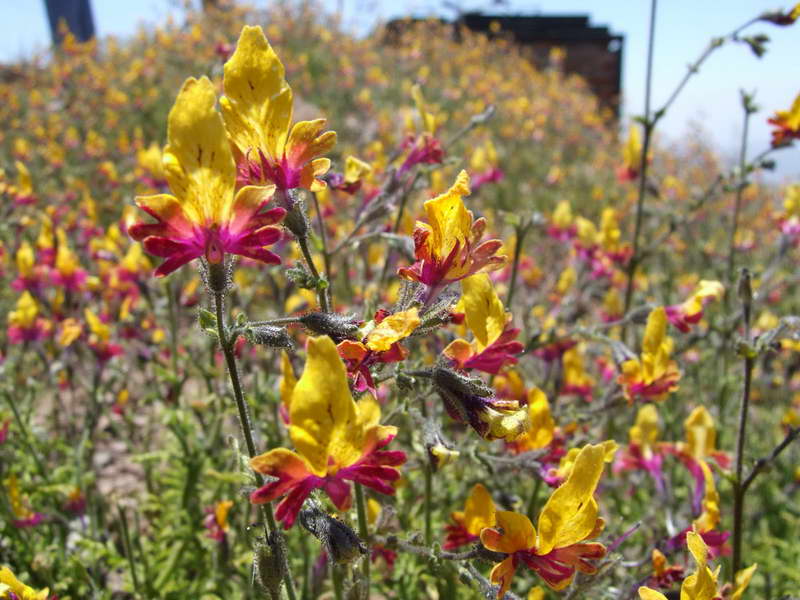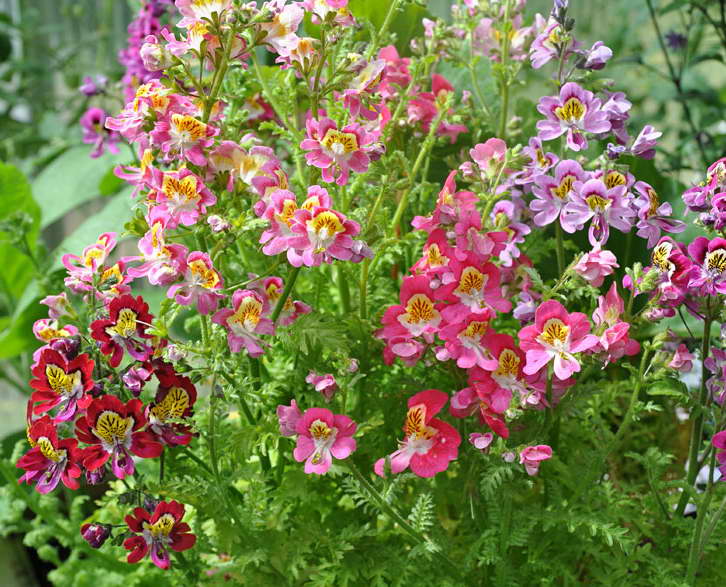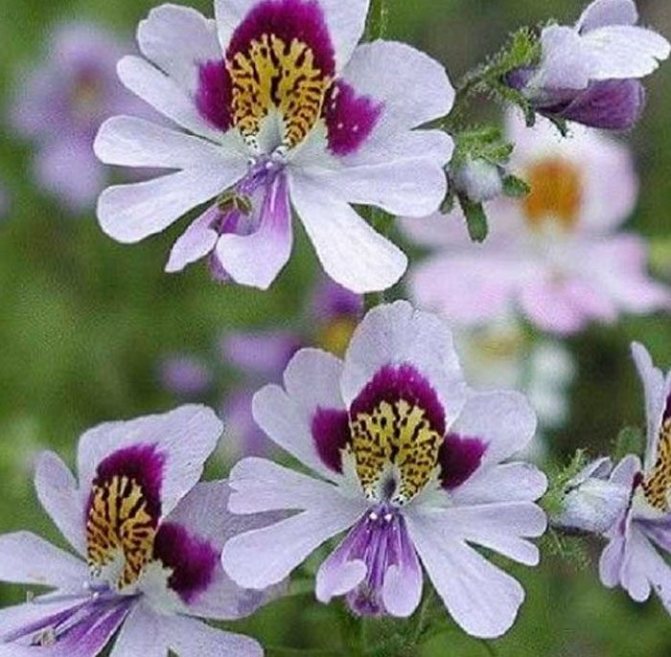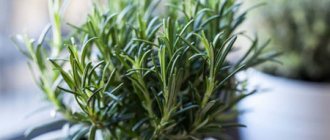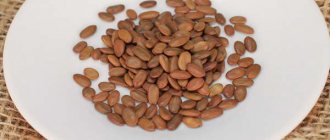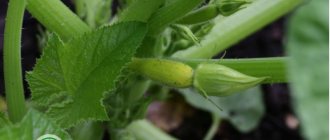One of the varietal varieties of Schizanthus Vizetonsky is Angel Wings. Such an annual plant can reach a height of 40 cm. From small flowers (about 2 cm in diameter), inflorescences located at the tops of the stems are formed. If the plant is well looked after, then the flowering can be so abundant that the stem among the flowers will not be so easy to notice. Angel Wings pleases the eye with a variety of colors, including pink, white, purple, carmine. The plant begins to bloom in May, and this process lasts until about September. It is allowed to grow this variety not only in flower beds, but also in containers and flowerpots, it is also suitable for growing in an apartment.
Features of schizanthus

Schizanthus is a lushly flowering perennial plant, or rather a biennial plant. But in the middle latitudes, it is cultivated as an annual plant. On the surface of the shoots and foliage, there is a pubescence, consisting of hairs. Bushes bloom for a very long time, or rather, from May until the first severe frosts. During flowering, the bush looks very impressive, and all thanks to the gorgeous flowers, which can have a variety of the most exotic colors. The flowers are colored red, purple, white, pink and yellow. In addition, petals are often decorated with patterns, strokes and spots. The shape of the flowers is similar to a butterfly, which is why the schizanthus is also popularly called the "butterfly flower". Inexperienced growers often confuse schizanthus with the Nemesis orchid, however, these are completely different plants belonging to different families, and only flowers are similar.
There are many varieties from which every gardener can choose the one that he will certainly like. All varieties differ not only in the color of the flowers, but also in the height of the bush. So, a plant in height can reach from 30 to 100 centimeters. Its flowers attract butterflies and bees. This plant can beautify any garden area, and it is also very popular in landscape design.
Possible problems during germination and their solution
Most often, flower growers are faced with such a problem as the drying out of the sprout. This is due to dry indoor air and insufficient watering. Another problem is rotting, which is caused by excess moisture in the soil.
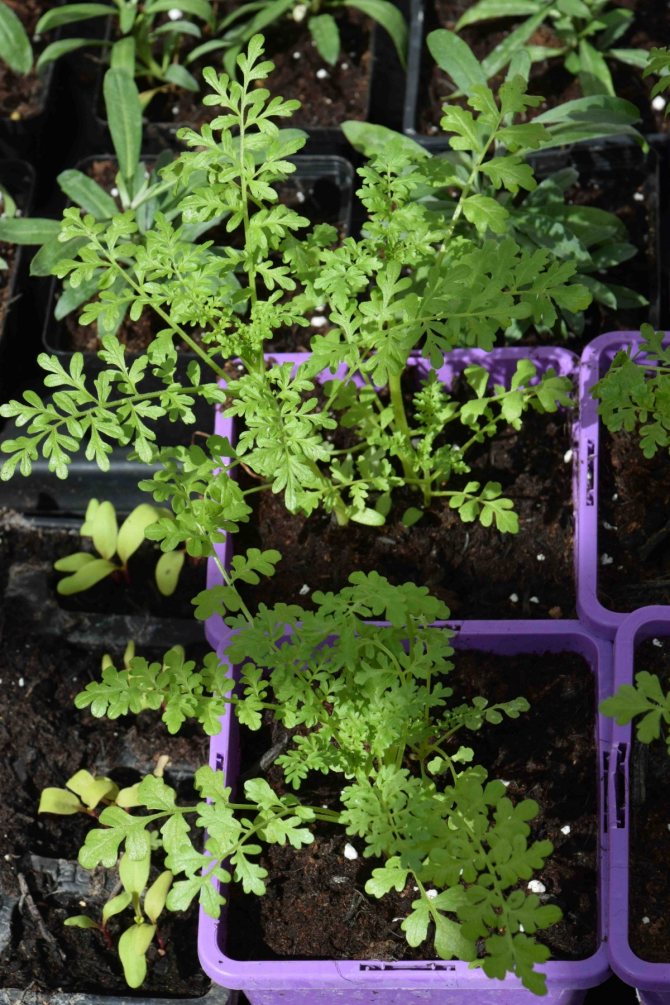

Photo: <>
To grow a healthy plant, it is necessary to maintain constant sufficient air humidity and watering frequency.
Growing from seeds
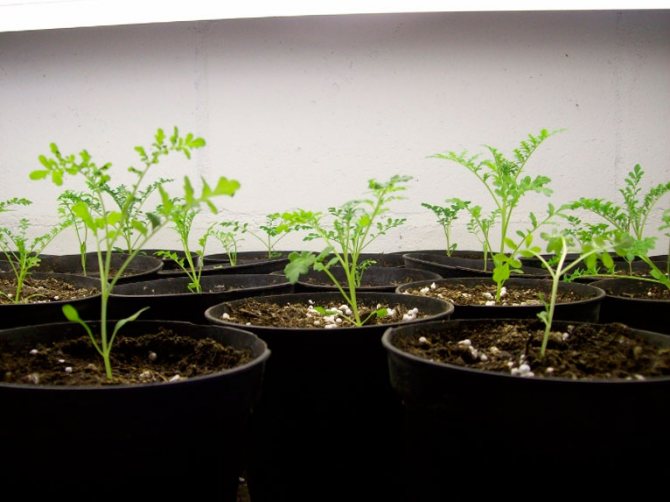

Sowing seedlings
It is possible to grow schizanthus from seeds through seedlings and in a reckless way, while doing this is quite simple, you just need to follow certain rules. Sowing seeds for seedlings is carried out in spring or autumn. If you decide to do this in the spring, then you should start sowing at the end of March or in the first days of April. Bushes grown from seeds in this case will begin to bloom around July. With the autumn sowing, which is carried out in September, the flowering of the schizanthus will begin in the last days of May.
The seedling boxes should be filled with light, well-drained nutrient-rich substrate. During sowing, seeds should be buried in the soil mixture by 0.3 centimeters. The crops are transferred to a cool place (about 18 degrees), and it is recommended to cover them with a black film on top.As a rule, seedlings appear at night after about 20 days. As soon as the weather is warm outside, it is recommended to transfer them to a well-lit balcony, they can also be placed on a sunny windowsill, it is best if it is located in the southern part of the room. Most importantly, keep in mind that the plants at this time need a lot of light. It is possible to dive a plant in separate cups only when at least three true leaf plates are formed in them. Transplanting seedlings into open soil is carried out after the return spring frosts are left behind. The distance between the bushes should be at least 25 centimeters.
The autumn sowing of schizanthus is good because the grown bushes will begin to bloom very early, around the end of May. In winter, the seedlings are kept in a cool but well-lit place. If necessary, they are provided with supplementary lighting using artificial lighting. In the event that some seedlings look weakened and lethargic, then in no case should they be thrown away. After the time is right, transplant them outdoors. Gardeners have noticed that it is from such weak seedlings that the most spectacular and luxuriantly flowering bushes grow.
Sowing in open ground
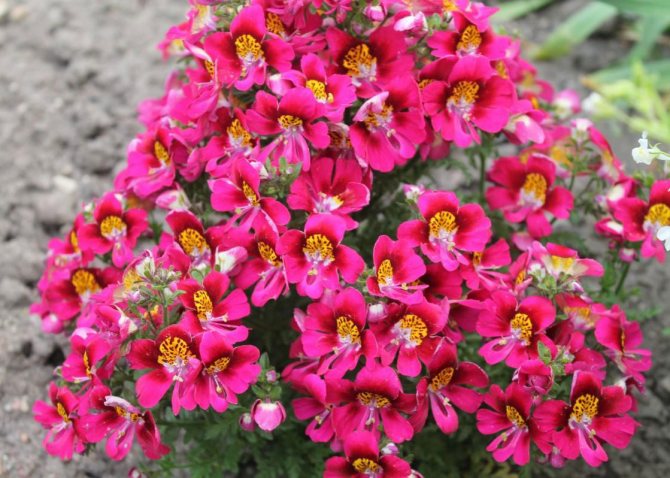

If desired, schizanthus seeds can be sown directly into open soil, but in this case, you need to be prepared for the fact that the grown bushes will begin to bloom only in July. You can start sowing only when the weather is warm, and at night there is no threat of frost. In order for schizanthus to bloom profusely and continuously, it is recommended to sow their seeds not all at once, but to do it in several stages with a break of several days. In the event that dense shoots appear, they will need to be thinned out so that there is a distance of about 25 centimeters between the bushes. Excess seedlings can be carefully dug up and planted elsewhere. The grown and matured bushes will bloom closer to the second half of July, but they will delight you with their flowers for a very long time, as a rule, until the first autumn frosts.
Some growers are trying to grow schizanthus so that it blooms by March 8th. But you should immediately take into account that this is very difficult to do, because the bushes, as a rule, begin to bloom not earlier than May. Sowing seeds in this case is carried out in early autumn in a heated greenhouse.
The most popular among gardeners is the method of growing schizanthus through seedlings. However, those of them who sow seeds directly into open soil assure that in this case the bushes will bloom very effectively and profusely, but only from the middle of summer, but until the very frosts (most often until October).
Choosing a place for planting schizanthus flowers
Schisanthus is very fond of bright sun, so choose a well-lit place for it. Indeed, with a lack of light, the plant stretches strongly and blooms very poorly.
Also, for the successful development of the plant, fertile, well-drained soil is needed. If the soil is not nutritious enough, add compost or some rotted manure.
Indoor flower scindapsus, an excellent choice for an apartment or balcony. We recommend that you read the article on our website, perennial gypsophila and its cultivation from seeds, all the details are here.
Schizanthus is planted with an interval of 25 cm between the bushes. If you do not keep the distance, the inflorescences of neighboring plants will cling to each other, interfering with proper growth and reducing decorativeness.
Landing in open ground
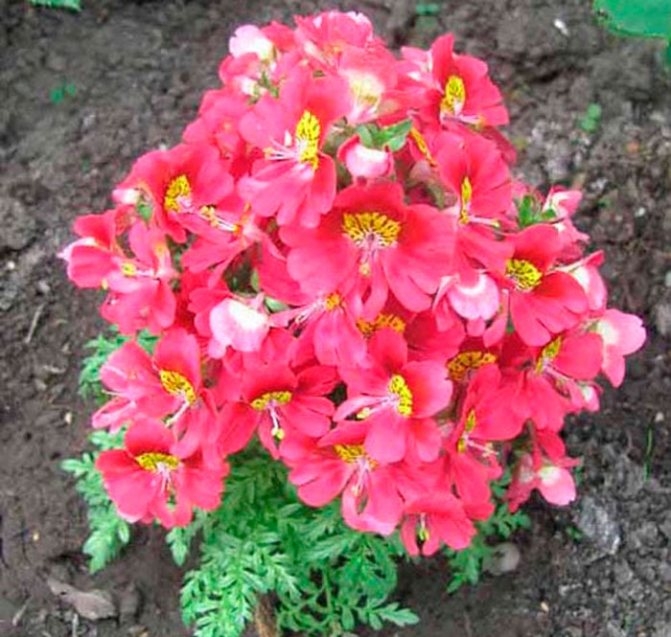

What time to plant
Planting grown schizanthus seedlings into open soil should be carried out only after the establishment of warm weather, while the threat of night frosts must be avoided. Most often, this time falls on the last days of April or May.
In order for the plant to grow and develop well, it is necessary to approach the choice of the site with all responsibility. It must have reliable protection from drafts and strong gusts of wind, as well as from prolonged rains. And also it should be borne in mind that such a culture is photophilous and for normal development it needs a large amount of sunlight, but at the same time it must be remembered that it reacts extremely negatively to too high an air temperature. In this regard, in regions with an excessively hot climate, it is recommended to choose shaded areas for planting schizanthus.
Since this flower is distinguished by a rather high demand for growing conditions, some gardeners recommend planting it not in open ground, but in pots or in pots. In this case, with the onset of hot days or long rains, it can be easily transferred for a while to another place, which will be protected from precipitation or from the scorching rays of the sun.
Also pay attention to the soil on the site, it should be slightly acidic, fertile and pass water and air well. In this regard, during the digging of the site, it is recommended to add peat and sand to the ground.
Description
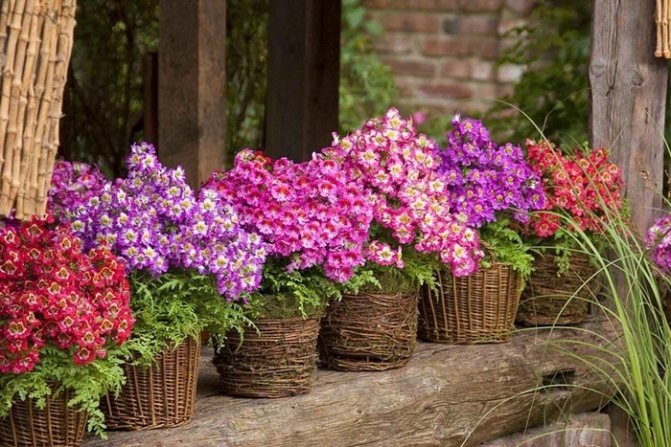

Botanical species are found on dry rocky slopes in Chile. Schizanthus Vizetonsky is the brainchild of breeders. Height, hybrid and its varieties do not exceed 40 cm in height. Flowering period, blooms profusely from June to September, approximately 10-12 weeks from sowing. The flowers are white, pink, carmine or lilac, covered with contrasting black, brown, carmine, dark purple or yellow spots. The corolla is shorter than the calyx. The place, schizanthus is planted in well-lit and protected from the wind places. For a beautiful flowering, the plant is sheltered from the rain, the downpour strongly destroys the flowers.
Schizanthus care
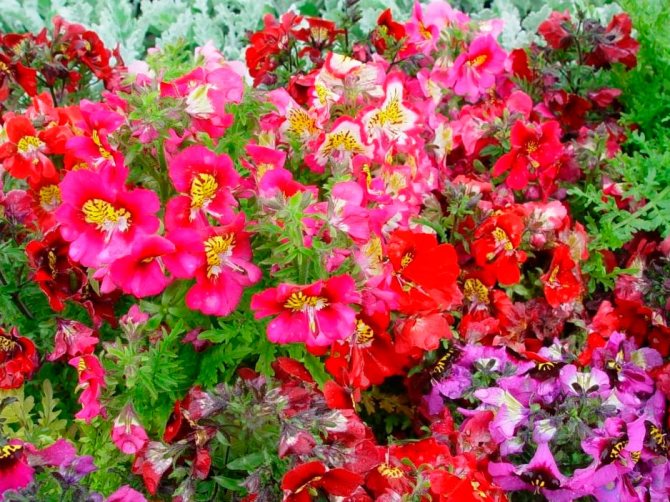

In order for the schizanthus bushes to be strong and bloom profusely and for a long time, they need to provide not only good, but also proper care.
Watering
Such a culture belongs to moisture-loving plants. In this regard, watering must be carried out systematically, while it does not matter whether the top layer of the soil is dry or not. Pour water gently under the root so that drops of water do not fall on the surface of the foliage. Water the plant with soft and warm water. Therefore, the water from the tap must first settle well for several days. However, the flower responds best of all to irrigation with rainwater, which has been heated by the rays of the sun.
Fertilizer
Top dressing should also be given special attention. Before the bush blooms, fertilizer is applied to the soil, which includes nitrogen, this contributes to the rapid growth of green mass. And when the plant blooms, then fertilizer for flowering plants must be used for feeding.
Care features
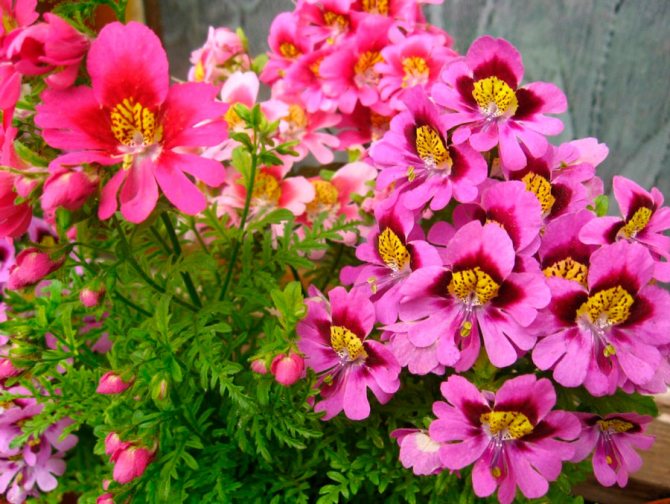

In order for the cultivation of schizanthus to be successful, it should provide:
- enough sunlight;
- systematic irrigation with suitable water;
- timely feeding.
Diseases and pests
Schisanthus is also susceptible to pests such as aphids, thrips and whiteflies.
Since Schizanthus belongs to the genus Solanaceae, it sometimes suffers from the same diseases as potatoes and tomatoes. These are diseases such as:
- Anthracnose - appears with high air humidity, high acidity of the soil, due to a lack of potassium or phosphorus. It appears as brown spots on the leaves.
- Pitiasis - root rot, appears due to too abundant watering or an overdose of nitrogen fertilizers.
- Late blight covers the leaves with bloom and spots. The causative agent is a fungus.
For prophylaxis, flowers should be periodically examined and diseased specimens should be removed in a timely manner. The damaged parts of the plant are removed, and the diseased bush itself is sprayed with a fungicide.
Among the pests are invariable aphids, whiteflies and thrips.They are fought with insecticides.
Use in landscape design
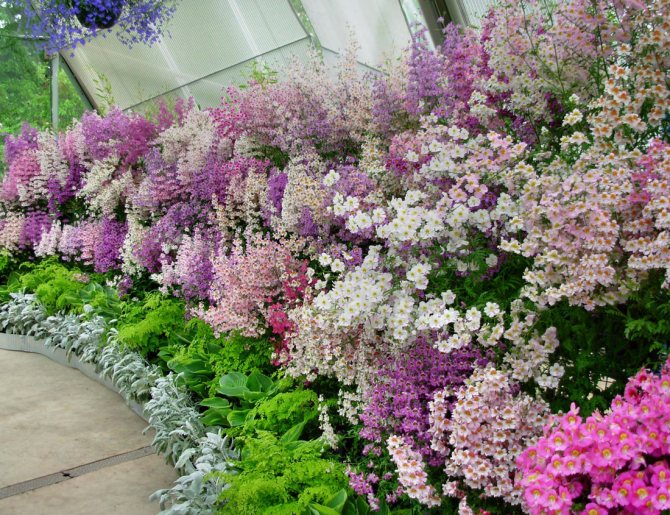

Schizanthus is very popular among landscape designers due to its bright appearance and long flowering. It is used for both group and single landings. Another flower can be planted in the foreground of flower beds or flower beds. And also they can decorate a rockery or an alpine slide. It can be combined with other flowering crops such as petunias, chamomiles, foxgloves, lobelias, pelargoniums or phlox.
This plant can also be grown in both simple and hanging pots, as well as in balcony boxes or in containers. Most often, low-growing varieties are used for this. They can be placed not only in the garden, but also on the terrace or on the veranda.
More about the flower
The schizanthus flower is native to South Africa and South America. It is a profusely flowering branched biennial plant. Belongs to the Solanaceae family. It has leaves and a stem covered with fine hairs. The blossoming buds look like wings, so the people have another name - "Butterfly Flower", and one of the varieties is called "Angel Wings".


Butterfly flower or schizanthus
The description of flowers is very diverse due to the significant number of schizanthus species in the wild - 15, and even more varieties. Depending on the variety, the petals are decorated with distinctive patterns consisting of specks, dashes, specks, have a bright juicy multi-colored color. It has a long flowering period - from May to October, when the first frosts begin.
Types and varieties of schizanthus with photos and names
The genus Schizanthus unites 12 different species. Below will be described those that are most popular with gardeners.
Schisanthus Grahamii (S. Grahamii)


The height of this annual plant is approximately 0.6 m. The flowers are pinkish-purple in color. The petals are decorated with many purple streaks and yellow spots. Breeders have bred varieties of this plant with flowers of snow-white, pink and lilac colors. Its stem is strongly branching, and its homeland is the mountainous regions of Chile.
Schizanthus Feathery (S. Pinnatus)
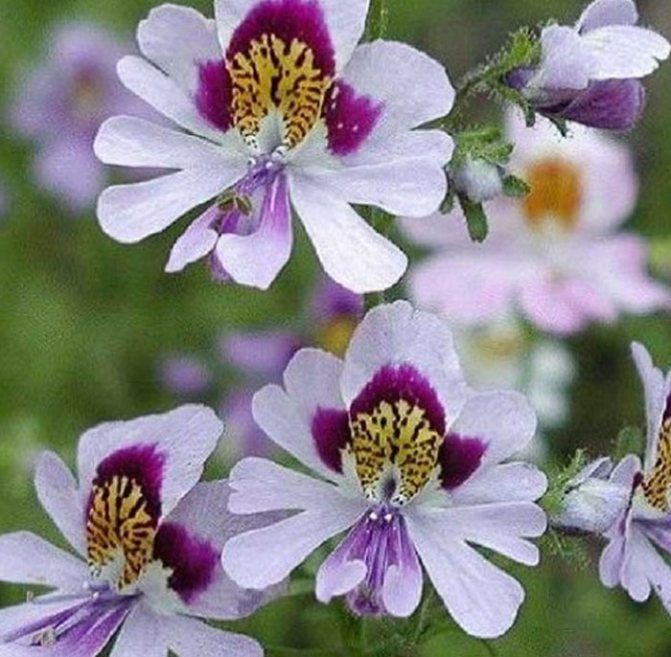

This species is an annual. The bush reaches a height of no more than half a meter. The racemose inflorescences, which are shaped like orchid inflorescences, are made up of small purple flowers. Today, there are varieties with inflorescences of deep pink and white colors. In the middle of the flower, and at the base of the lower petal, there are many strokes and spots.
Schizanthus Vizetonsky (S. Wisetonensis)
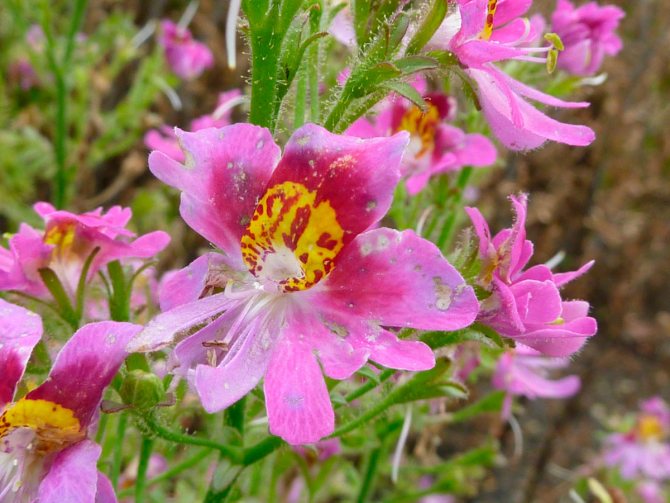

This hybrid was created using Schizanthus Feathery and Graham. The bush reaches a height of no more than 0.6 meters. Irregularly shaped flowers reach about 20 mm in diameter. They are painted in various shades of pink, and there are also plants with white inflorescences. This type of garden is most popular with gardeners, as the plant is very showy and graceful.
Various varieties of this culture are also popular among gardeners. The best ones will be described below:
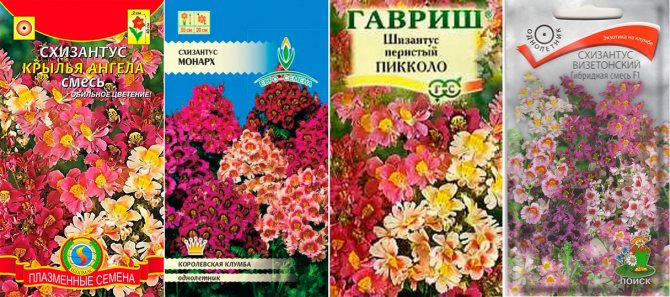

- Angel Wings... This variety belongs to the Vizetonsky schizanthus species. An annual plant can reach a height of about 0.4 meters. In the upper part of the stems, inflorescences are formed, consisting of small flowers, reaching up to 20 mm in diameter. If the plant is well looked after, then the flowering will be so lush that even the stem will not be visible due to the many beautiful flowers that can be painted pink, purple, white or carmine. The bush blooms in May, and flowering ends only in September. This variety is suitable for outdoor cultivation, as well as for growing in containers and flowerpots. It can also be grown at home.
- Monarch... This variety includes annual schizanthus.Erect shoots reach a height of about 0.4 meters. On their tops during flowering, the formation of inflorescences is observed, which include irregularly shaped flowers with a diameter of about 20 mm. They can be painted in carmine, cream, red or pink. The variety blooms magnificently and for a long time. Flowering begins in May, and ends with the first autumn frosts. You can cultivate such a plant in the garden in open soil or in containers.
- Piccollo... This annual variety belongs to the schizanthus pinnate species. The bush does not exceed 0.45 meters in height. The racemose apical inflorescences consist of many small flowers that are pink, cream or crimson in color. Such a plant can be grown not only outdoors, but also in flowerpots. The bush blooms in May, and only fades in September.
- Fiji... This exotic variety is very showy. Shoots form a pyramidal bush. The variety blooms stably, with numerous flowers tightly covering the shoots. They have a tubular shape, and reach no more than 20 mm in diameter. They can be painted pink, white or purple. A large number of spots and stripes are located on the surface of the petals. Flowers are collected in panicle inflorescences. The variety can be cultivated in a rock garden, open field or in a container.
- F1 Hybrid Blend... Hybrids belong to the Vizetonian Schizanthus species. The height of such an annual plant can reach 0.55 m. Lush bloom lasts from the first days of July to September. Panicle inflorescences consist of small flowers, reaching up to 20 mm in diameter, which have a pink, cream or crimson color, with a pattern on the petals. This hybrid mixture grows well in sunny outdoor areas, and it is also grown in beddings.
Views
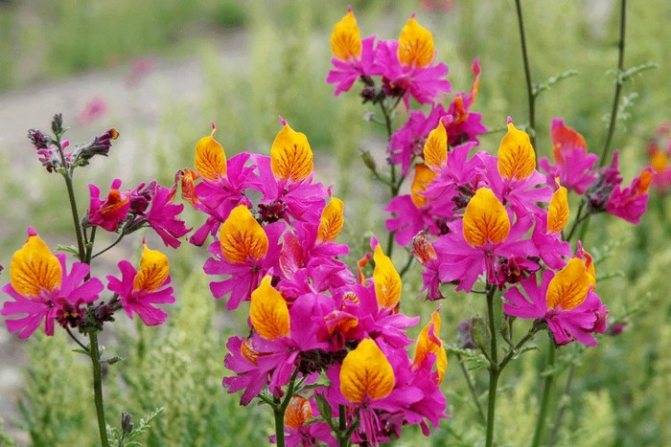

Schizanthus grahamii. Up to 60 cm tall. Shoots slightly pubescent, almost glabrous. The leaves are single or double-pinnate, the flowers are magnificent, purple-pink. There is an orange spot and purple stripes on the lower lip. Garden varieties with white, carmine and purple flowers are known.
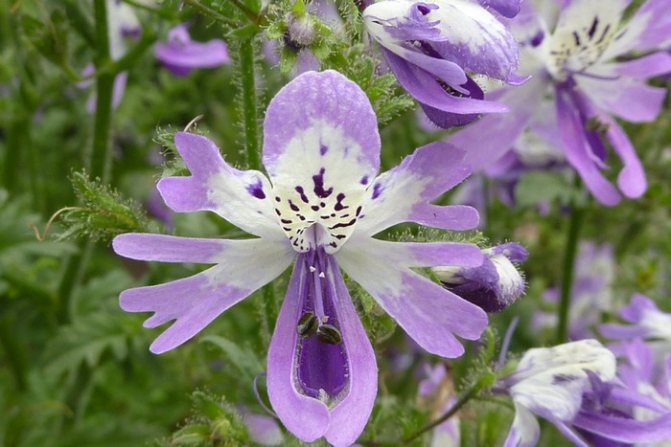

Schizanthus pinnatus (Schizanthus pinnatus). Up to 45 cm tall. Leaves are pinnately dissected three times. The flowers are two-lipped, up to 4 cm in diameter. The lower lip is purple or lilac, the upper one is lighter, with a yellow dot in the center.
Blunted schizanthus (Schizanthus retusus). Up to 50 cm tall, less hairy than previous species. It has pinnately dissected leaves and red-pink flowers, the middle part of the upper lip is orange. The flower tube is the same length as the calyx. Garden varieties have flowers of various colors.
Growing schizanthus in a room and on a flower garden
Lighting and location
Wherever you grow schizanthus, one of the main conditions is maximum light. Only in this case will you achieve abundant flowering. In the room, select the most illuminated places for it. The sills of the east and south windows are best suited. True, at the southern windows it will need to be slightly shaded from direct sunlight during the hottest hours.
On a flower garden, where the roots of the plant will not be limited by the volume of the pot and there is no window glass that enhances the effect of sunlight, plant the schizanthus in the most illuminated place.
Note! On the flower garden, schizanthus is grown as an annual plant. He is not able to hibernate in the open field during our winters. But he is biennial, therefore, his life can be extended. To do this, dig it up in the fall and plant it in a flower pot. Further care as a houseplant. In the spring, the overwintered flower is again planted in the flower bed.
Soil requirements
The most preferred soil for planting schizanthus is fertile, loose.It is advisable to fertilize the soil before planting the plant by adding part of the greenhouse land, compost, humus, etc. to it.
For indoor schizanthus, a universal soil mixture for flowering indoor plants is quite suitable. But it is not difficult to compose it yourself at home. For planting, ordinary soil from the garden is suitable, in which you need to add half of the peat and sand.
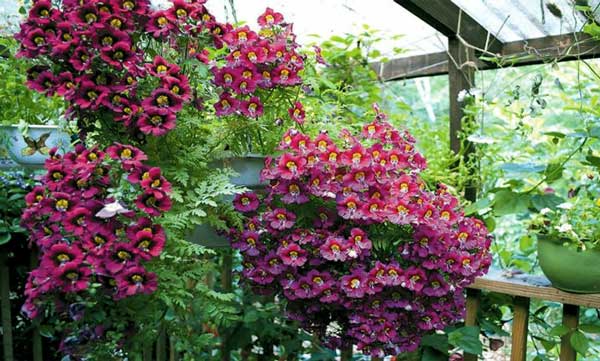

Temperature
For schizanthus grown outdoors, this factor is not particularly significant. We will not be able to regulate the temperature outside. At home, we are quite capable of this. The main thing to remember is that schizanthus is very susceptible to high air temperatures, and if it is able to tolerate the summer heat quite easily outside, then a high temperature in the room, and even in combination with low humidity, can cause significant harm. In the cold season, for the schizanthus, the temperature is preferably lowered, within +10 - 16 degrees. In general, schizanthus very quickly and well adapts to normal room temperature.
Watering, air humidity, feeding
Schizanthus equally dislikes overdrying and waterlogging. This applies to both indoor and garden views. Try to maintain constant soil moisture, but without undue zeal. The soil should only be moist, not waterlogged, damp. Stagnant moisture is more likely to destroy the plant than short-term overdrying.
Maintaining air humidity is only relevant for schizanthus grown in a room. It is better not to spray the plant itself, but to humidify only the air around it.
During flowering, the schizanthus especially needs feeding. It is often recommended to feed him twice a week. This is true for the entire growing season of the plant, but when the schizanthus blooms, it is better to feed it more often (once a week), but reducing the fertilizer concentration by half. For top dressing, you can use the usual mineral fertilizers for flowering plants.
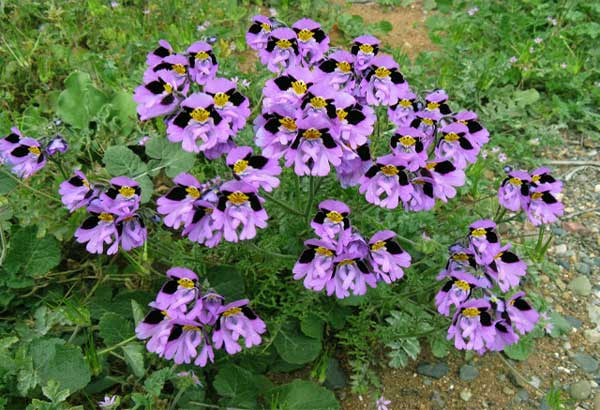

Growing schizanthus from seeds
In fact, this is the most common growing of seedlings. Schizanthus seeds are evenly scattered over the surface of light sandy soil and covered with a thin layer of the same soil. The germination temperature should not be particularly high - within + 16-18 degrees. Schizanthus seeds germinate not particularly quickly, from three weeks to a month. After the appearance of two or three true leaves, the seedlings can already be planted. In growing schizanthus from seeds, there are two important points to pay attention to.
Read also: How to make a stand for seedlings with your own hands
First. You can sow seeds both in spring and autumn. If you want to get early flowering of schizanthus, then start sowing in September, or even at the end of August. In this case, all plants become indoor plants. Keep young schizanthus at normal room temperature with a decrease in the winter. In the spring, with the onset of stable heat, they are planted on a flower garden. For spring planting, sowing is done in March and is grown as a normal seedling. But the flowering of such plants is more scarce and occurs only by the middle of summer.
Combined cultivation of schizanthus seedlings is also practiced. That is, in the period from the beginning of autumn to March, the seeds are sown several times. Thus, plants of different ages and with different flowering periods are obtained, which will allow you to create a continuously blooming flower bed with schizanthus.
Second. Unlike other plants grown in seedlings, weak and seemingly unviable seedlings are not discarded, but, on the contrary, the most favorable conditions are created for them. The fact is that the brightest and most unusual plants grow from such "scum".
Possible diseases
As you know, good maintenance and proper cultivation are the key to good plant health.But there is still a chance of getting fungal diseases inherent in all nightshades. This is anthracnose, and root rot, and late blight. Prevention and control of them is the same as with similar diseases on potatoes and tomatoes.
Schizanthus - growing in the garden and in the house
Schizanthus (sometimes written - "schizanthus") is popularly called "Angel Wings". Perhaps this name is the best way to characterize his extraordinary "appearance". There is another name for this flower - "Poor Man's Orchid". Indeed, schizanthus flowers are very similar to orchid flowers. But the relatives of the schizanthus must be looked for not among the phalaenopsis, miltonia or cymbidiums, but in a completely different place - in the garden. Let it not seem strange. Schizanthus is from the nightshade family, which means its "brothers" are potatoes and tomatoes. As well as its relatives in the garden, this flower always occupies one of the most advantageous places on the flower garden. It is not difficult to grow schizanthus. He is quite unpretentious and hardy. But he still has preferences, and he needs care, albeit quite simple.
What else is notable about this flower is its versatility. It belongs to those plants that can be grown both on a flower garden and at home, in a room, like chrysanthemums or gerberas. The only difference between the indoor schizanthus and the garden one is its size. For growing at home, more compact species are chosen.
Sowing on the ridge
In the southern regions, the seeds sown in the II-III decade of April, in temperate latitudes - in the II-III decade of May, will quickly sprout, and in July beautiful bright flowers will appear in the flower garden, which will delight until late autumn. To get long and continuous flowering, not all seeds are sown at once, but with an interval of 4-5 days.
A site for a thermophilic culture is chosen in a bright place and with little shading if it is hot and dry in summer. The ridge is pre-dug up, the surface is leveled - the water should not drain and wash off the seeds. In a low area with stagnant moisture, you can build a bulk layer.
Seeds are sown in the same way as for seedlings, after which they close the ridge with spunbond or put a small greenhouse. Seedlings require moist soil, so it should not be allowed to dry out. After 1.5-3 weeks, the first shoots should appear.
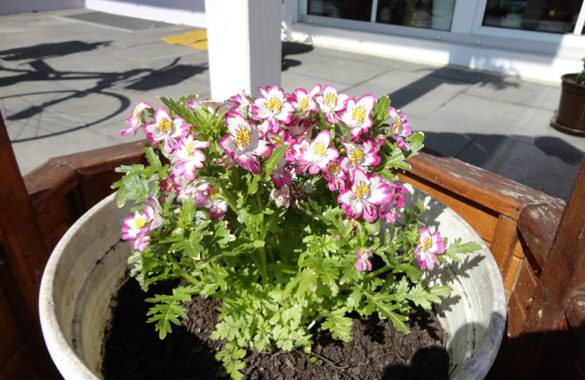

Dense shoots after the formation of two leaves are thinned out, the removed seedlings can be planted.
Florist reviews
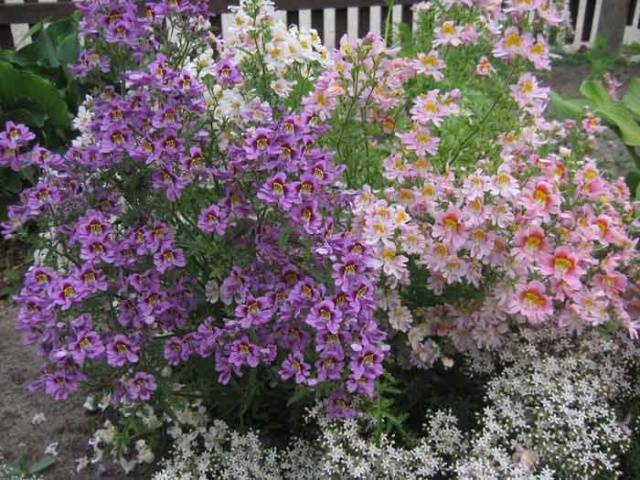

Everyone who has ever tried to grow schizanthus is not disappointed in their choice, since even the appearance of individual flowers can cause admiration among inexperienced gardeners.
Name, age, city
Review text
Name, age, city
Review text
Name, age, city
Review text
Most popular varieties
The genus Schizanthus has about 12 different species. From the point of view of decorative floriculture, the most promising are:
- schizanthus Graham;


- schizanthus Cirrus;
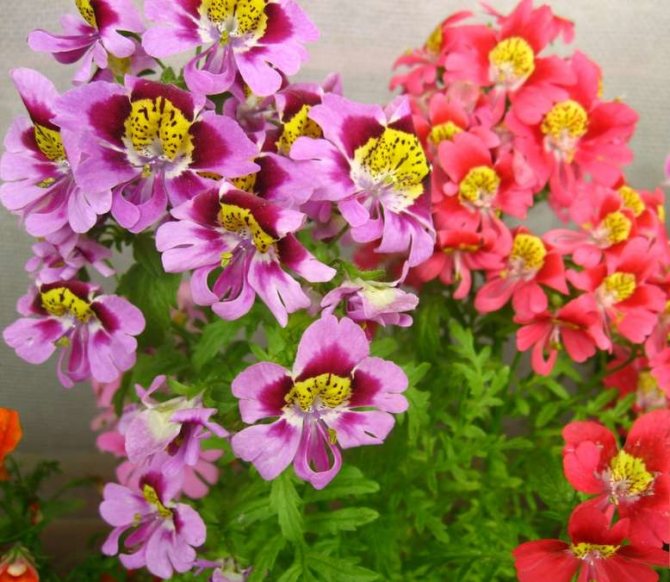

- Angel wings;
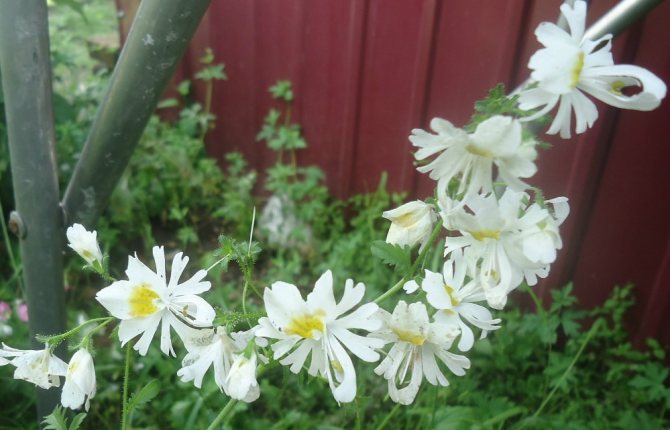

- Vizetonsky.


How to care at home
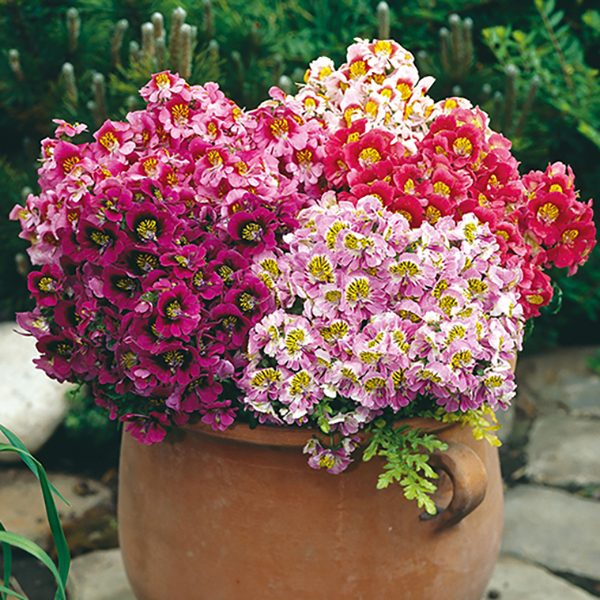

Schizanthus is distinguished by its high decorative qualities.
Place of cultivation
Schizanthus belongs to undemanding cultures. The plant develops well in illuminated areas. It is also able to preserve decorativeness in partial shade. Prolonged lack of sunlight leads to stretching of the shoots.
Temperature regime
In the hot summer, schizanthus can suffer in the area from exposure to high temperatures. The combination of a thermometer mark above + 25 degrees with dry air significantly affects the development of culture.
In indoor conditions, the plant is able to quickly adapt to sudden changes in microclimatic conditions.
In winter, indoors, the ambient temperature should be in the range from + 10 to + 15 degrees. It is important to ventilate the room daily.Good air circulation is the key to plant resistance to damage by various diseases and pests.
Proper watering
Schizanthus belongs to moisture-loving plants. Even a short-term drought harms the culture. The moisture content of the substrate should be constantly maintained.
Planting and breeding methods of aeschinanthus
Having delighted its owners for 5 years, Aeschinanthus needs to plant a new sprout. This is due to the fact that a representative of the Gesneriev family has evergreen foliage and long shoots, which grow quite actively in the spring. Located closer to the ground, its stems become stiffer over the years, the greenery falls on them. Because of this, the plant loses its attractive appearance, splendor. In this case, it makes sense to replace the old flower with a new one. In order not to acquire a new pet in the store, it is worth multiplying it in advance.
There are 3 ways to do this:
- Seeds.
- Cuttings.
- Leaves.
Reproduction by semen is rather complicated; it is more often used in laboratory conditions. But some amateur gardeners still try to plant the plant this way. To do this, sprinkle the seed evenly on even wet soil in the container and cover with glass. It is watered from below, liquid and nutrients come from the pan. The temperature regime of the room where the seed is trying to sprout should be over + 25 ° C. When the first shoots appear, the glass is removed. These seedlings are planted in a flowerpot in several pieces. New plants bloom in a year.
1. Seven Secrets of Success:
| 1. Growing temperature: throughout the year, quite cool content at a temperature of 14 - 18 ° C. |
| 2. Lighting: brightly lit location, plants should sunbathe in the morning and evening daily. Light shading should be organized during the daytime in spring and summer. |
| 3. Watering and humidity: irrigate with warm water during spring and summer in such a way as to dry out a layer of soil about 2 cm thick between them. Reduce watering in autumn and protect the soil from complete drying out in winter. The air humidity is increased to prevent infestations of harmful insects. |
| 4. Pruning: removal of wilting buds as they appear, sanitary pruning. Regular pinching of the tips of young shoots to form side branches. |
| 5. Priming: nutritious soil, loose with good drainage, the pH of the soil should be between 6.5 and 7.2. |
| 6. Top dressing: every 2 weeks with liquid mineral fertilizers in half concentration during the period of active growth. |
| 7. Reproduction: easily propagated by sowing seeds in spring. |
Botanical name: Schizanthus.
Schizanthus flower - family... Solanaceae.
Origin... Argentina, Chile.
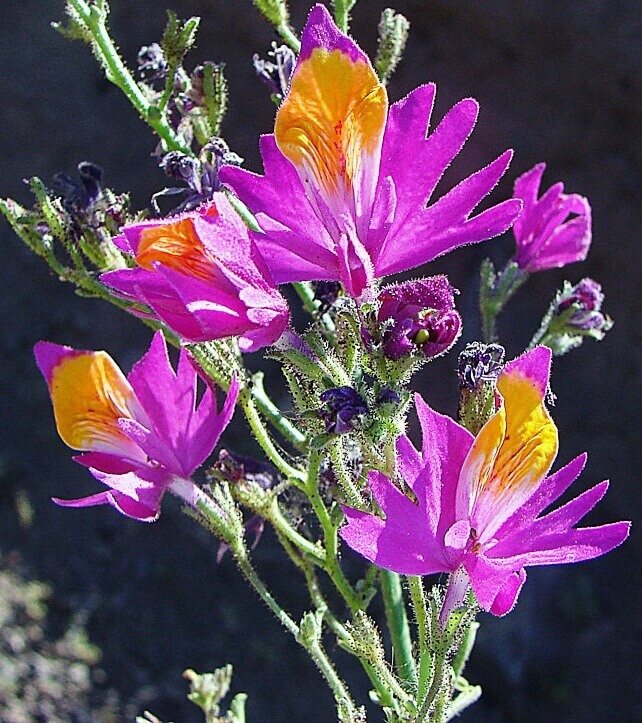

Description... The genus Schizanthus contains annuals or biennials with charming, vibrant blooms. Stems are erect or gracefully drooping, profusely branching. The leaves are bright green, attractive, feathery, reminiscent of a frond of ferns, up to 15 cm long. Young shoots and leaves have sparse pubescence. The flowers are small, up to 5 cm in diameter, collected in the apical plates and during the flowering period they almost completely hide the plant itself. Flower shades range from white, pink, lilac, red, purple, burgundy to varieties with flowers of two or more tones.
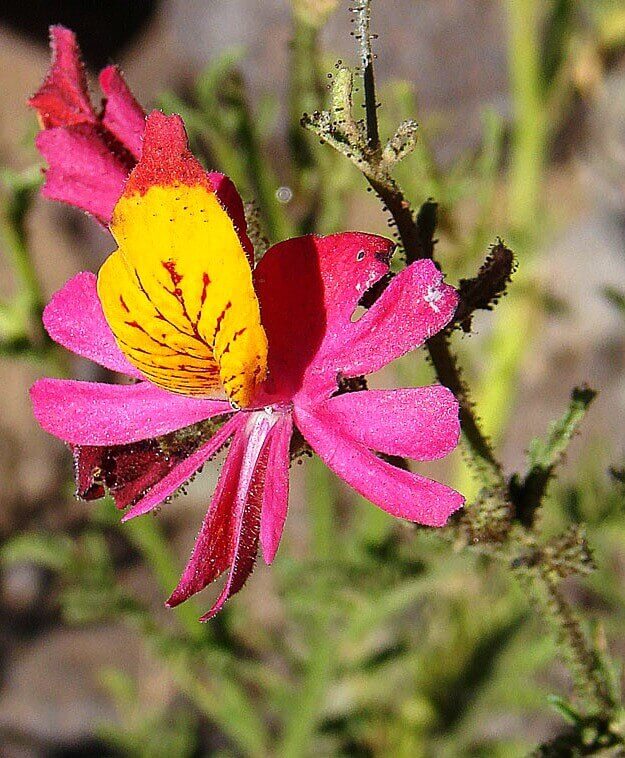

Height... In a room culture, low varieties of schizanthus are grown - up to 40 cm in height.
How to grow seedlings, sowing dates
Schizanthus in natural conditions is a biennial, therefore, the sowing time is different than that of annuals. Early flowering (April-May) is obtained when sown in the last decade of August or in the first decade of September. Before planting on a ridge (flower bed), the seedlings are kept indoors, which is troublesome, but worth it - the site will look bright and beautiful in spring. If the seeds are sown in the II-III decade of February or in the first decade of March, then flowering, depending on the care, will come in June-July.
Since the seeds are small in size, the soil should be light, moisture and breathable. Soil mixes are suitable for seedlings of flower crops, tomatoes, and eggplant. Vermiculite is introduced into it in order to impart friability - about 1/8 of the volume. You can prepare the soil mixture yourself by mixing equal parts of high-moor peat, turf, sand with superphosphate and ash in small quantities. For the prevention of fungal infections, they are treated with a fungicide, a pink solution of manganese, boiling water or frozen.
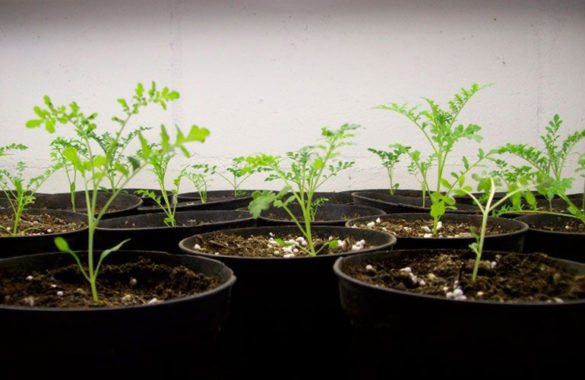

A large amount of fertilizer in the soil can provoke a lack of flowering, so this fact must be taken into account when buying ready-made soil mixtures.
How to plant:
- fill a plastic container (depth about 5 cm) with drainage holes with a mixture, moisten;
- spread the seeds over the surface or into small grooves, cover with earth (layer 2-3 mm);
- cover with a dark film and put in a cool room (18-20 ° C);
- keep the soil moist, opening the lid only to collect condensate;
- if the seeds are fresh, the seedlings will appear quickly - for 4-5 days, in a different scenario the seedlings may appear within 25 days;
- as soon as sprouts appear, you need to provide them with maximum light, slightly lower the temperature and regularly moisten, preventing the formation of a crust on the soil, otherwise the roots may die;
- if there are 2-3 leaves, cut them apart in separate cups or put in a large box with an interval of 15 cm;
- when the seedlings take root (about 7 days), you need to feed them with a complex of mineral fertilizers, then after the formation of buds, the interval between dressings should be 1-1.5 weeks;
- pinch the tops twice - when the seedling grows up to 8 cm and up to 16 cm;
- transplant to a flower bed in May, when the soil and air warm up to 10 ° C.
When growing seedlings in autumn, a temperature of 18 ° C is required, the best option is up to 6-10 ° C. With a lack of light, the seedlings stretch out, so the lighting should be maximum. Protect from direct sun with cloth, paper. If it is difficult to create such conditions and the necessary care, then it is better not to plant in the fall.
The roots of the schizanthus grow, therefore, containers for the flower must be chosen with a diameter of 25-26 cm.On the ridge between the holes for low varieties, leave a similar distance, for medium and high ones - 40 cm and 70 cm, respectively.
Reproduction nuances
Schisanthus spreads easily with seeds. It is advisable to use the seedling culture method.
The schizanthus has a little secret. On the smallest and weakest sprouts, large inflorescences with unique patterns and shades are subsequently formed.
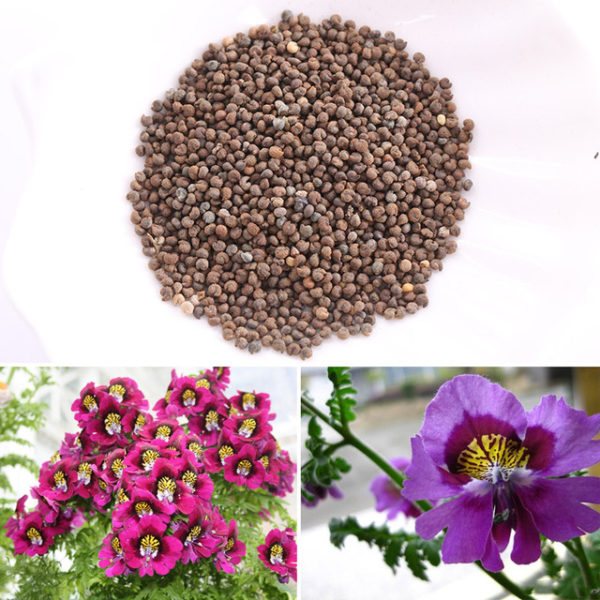

Schizanthus can be spread using seeds.


